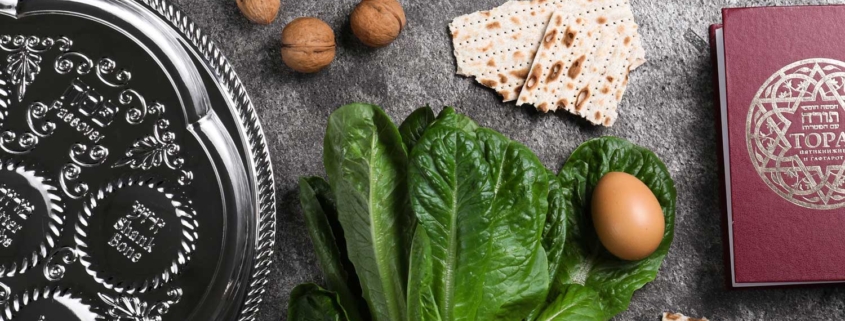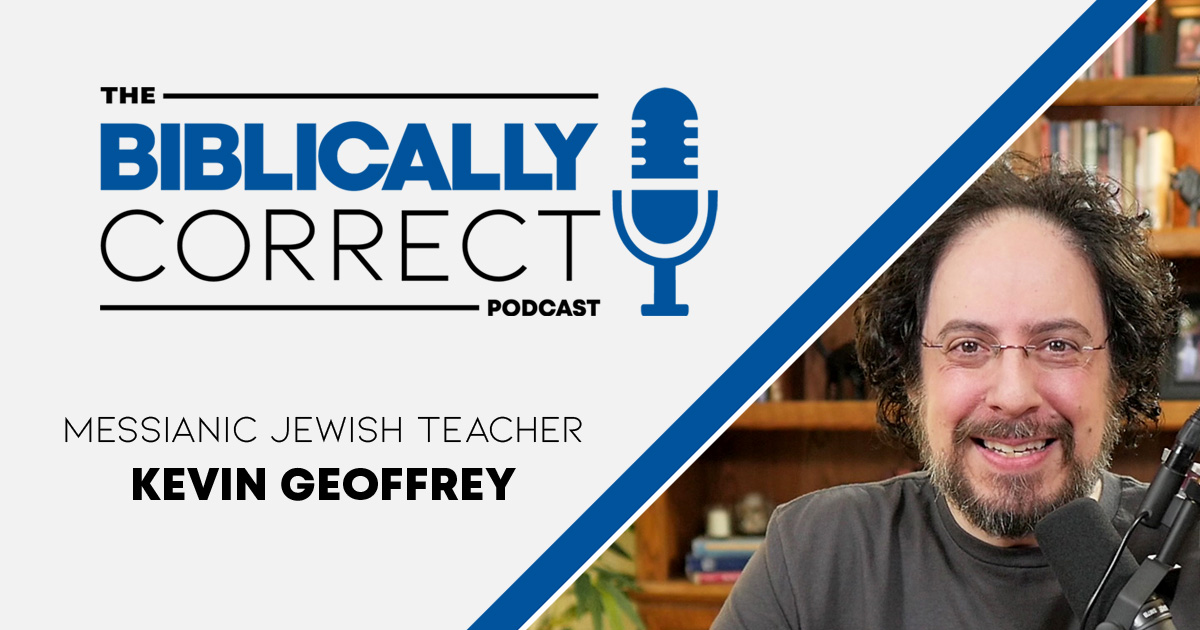What Judaism Gets Wrong About Passover
Passover is perhaps the most widely observed Jewish holiday, carrying with it thousands of years of history and rich tradition. And yet, most of what is typically observed today in the central ceremony of Passover—the Passover Seder—isn’t biblical. Despite any modern innovations and adaptations (including Messianic ones) most of the elements of the Passover Seder, as long established by post-Temple rabbinic Judaism, sadly have no basis in Scripture.
At the heart of the Passover ceremony is the Seder plate. Let’s consider its edible elements. Two spots on the plate are occupied by the bitter herbs (m’roriym)—traditionally horseradish and romaine lettuce. The maror is clearly scriptural, being commanded in Exodus 12:8 as part of the Passover meal. But, unfortunately, the maror alone constitutes the whole of the Seder plate’s scriptural elements. Everything else is an invention of Judaism.
The shankbone, the salt water, the charoset, the parsley and the roasted egg—all are Judaism’s innovations. This means that when the Seder plate is used to tell the Passover story, it’s because tradition says to use it—not God. And man-made tradition has the potential to stray from the truth.
Take, for example, the roasted egg, which some in Judaism say represents the cycle of life, since the egg’s shape has no beginning and no end. From where would such an idea originate? Or what about the dipping of the finger and spilling of the wine during the recitation of the Ten Plagues? Why observe such a strange practice? According to The Jewish Book of Why, “Many early societies believed that evil spirits could be bribed with wine. Accordingly, some wine was always spilled from the cup before any of the wine in that cup was drunk.” Bribing evil spirits? And the author of Essential Judaism believes that the relevance of the parsley and egg are self-evident: “the greens for the arrival of spring, the egg a symbol of fertility.” But what does a fertility symbol have to do with Passover?
Could paganism or mysticism or superstition explain the presence and use of these elements in the Seder? Who knows. But we do know that they aren’t part of the Seder because God told anyone to put them there. Somebody invented them, and the inspiration for that invention could be completely innocent, or the result of influence by false, anti-biblical beliefs. When we have the word of God to guide us, why would we even take a chance with traditions of unknown or questionable origin?
The Passover Seder as instituted by rabbinic Judaism is the heart and soul of nearly every modern Passover Seder—including Messianic and Christian celebrations. At the center of the Seder is a retelling of the Passover story, using the various elements of the Seder plate and table to create a sensory experience. But with the exception of the bitter herbs (and matzah), not a single element on the Seder plate is either indicated or commanded in Scripture by God. The origins and uses of those elements range from the benign, to the questionable, to the probably pagan.
Yet despite all the innovation and invention of Judaism, and the adaptations and additions of Christians and Messianic Jews, the fundamental Torah concerning Passover—Pesach—remains strikingly simple: “eat [the Pesach] with matzot and m’roriym”—and then tell the story (Ex. 12:8&26f). That’s all. And this brings us to perhaps the biggest thing that Judaism—and nearly everyone else—gets wrong about Passover: the Passover Seder isn’t the Passover. There is no Passover without a sacrificed lamb, and the Torah forbids us to sacrifice one anywhere but Jerusalem. This makes our remembrance of the Passover, while meaningful, nevertheless incomplete.
So for a Scriptural alternative to the Passover Seder, consider this as an appropriate memorial: First, in your home, share a meal with family and friends. Make it as simple or as elaborate as you want, but include the matzah, bitter herbs, and—if you like—even some lamb. The Master Yeshua also included the fruit of the vine. Second, tell the story of how God delivered Israel from slavery. Read it directly from the book of Exodus, say it in your own words, or even use the matzah and bitter herbs to tell it if you so choose.
But however you do it, recount it simply, based on the Scriptures, and do it as an act of sharing the history of God’s people with the next and future generations. And third: remember and celebrate Yeshua as the embodiment and fulfillment of the Pesach. When you break and share the matzah, remember His body that He gave for you, and how the Lamb of God, through that selfless and perfect sacrifice, also made you unleavened (1Co. 5:7-8).
Did this post bless you?
♥
What Judaism gets wrong about Passover is what we all get wrong in nearly every area of life: forgetting to stick close to the Scriptures, swerving to the left and the right, adding our own ideas on top of or in place of God’s, and burying the pure and simple truth of His word. So this year for Passover, don’t default to tradition and the way things have always been done, but return to the perfect word of God. Because even though we can only remember the Pesach, still, we may scripturally keep the feast.
What do you think? Share your thoughts in the comments below!








What a great reminder from Kevin. Let’s keep the feast but keep it according to the scriptures!
Wow what a powerful little text! HalleluYah! This year I will be celebrating with a couple friends just the way scriptures intended. Reminding and pointing to Christ and partaking of the biblical elements to honor the Feast. Thank you for this post!